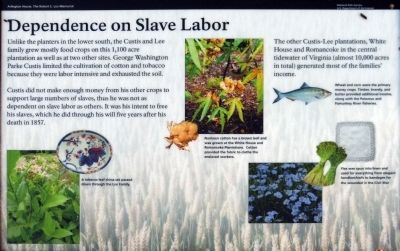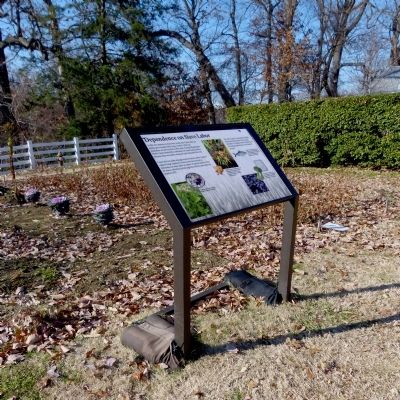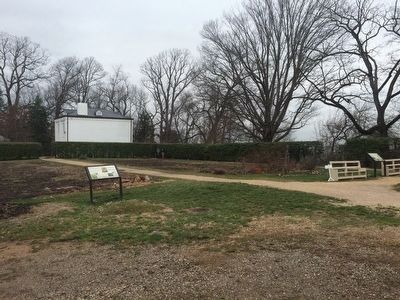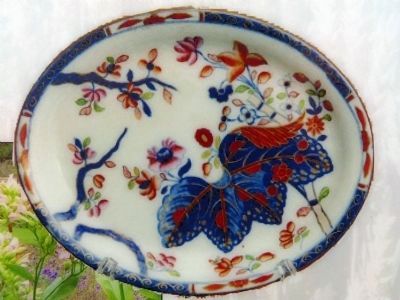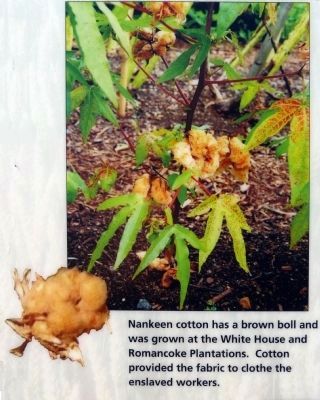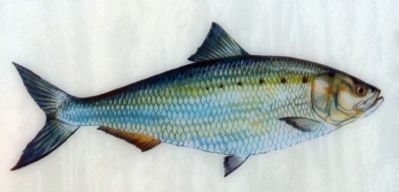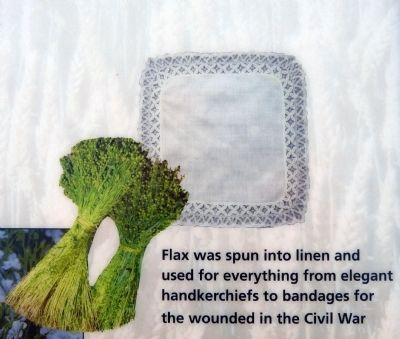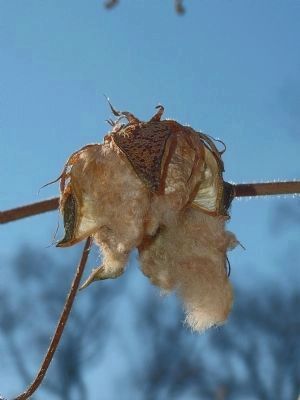Fort Myer in Arlington in Arlington County, Virginia — The American South (Mid-Atlantic)
Dependence on Slave Labor
Arlington House, The Robert E. Lee Memorial
— National Park Service, U.S. Department of the Interior —
Unlike the planters in the lower south, the Custis and Lee family grew mostly food crops on this 1,100 acre plantation as well as at two other sites. George Washington Park Custis limited the cultivation of cotton and tobacco because they were labor intensive and exhausted the soil.
Custis did not make enough money from his other crops to support large numbers of slaves, thus he was not as dependent on slave labor as others. It was his intent to free his slaves, which he did through his will five years after his death in 1857.
The other Custis-Lee plantations, White House, and Romancoke in the central tidewater of Virginia (almost 10,000 acres in total) generated most of the families' income.
Erected by National Park Service, U.S. Department of the Interior.
Topics and series. This historical marker is listed in these topic lists: African Americans • Agriculture. In addition, it is included in the National Cemeteries series list. A significant historical year for this entry is 1857.
Location. 38° 52.893′ N, 77° 4.373′ W. Marker is in Arlington, Virginia, in Arlington County. It is in Fort Myer. Marker can be reached from Sherman Drive, 0.1 miles south of Lincoln Drive, on the left when traveling south. Marker is in the garden north of Arlington House near Custis Walk. Touch for map. Marker is at or near this postal address: 321 Sherman Drive, Fort Myer VA 22211, United States of America. Touch for directions.
Other nearby markers. At least 8 other markers are within walking distance of this marker. A Garden Sustains (a few steps from this marker); Growing Season (a few steps from this marker); Piecing the Past Together (a few steps from this marker); Paying Tribute (within shouting distance of this marker); Evolving Vision (within shouting distance of this marker); Arlington Estate, 1860 (within shouting distance of this marker); Long Haul (within shouting distance of this marker); Guardian of a Nation's Heritage (within shouting distance of this marker). Touch for a list and map of all markers in Arlington.
Also see . . . Arlington House, The Robert E. Lee Memorial. National Park Service (Submitted on December 1, 2013.)
Credits. This page was last revised on February 1, 2023. It was originally submitted on November 30, 2013, by Allen C. Browne of Silver Spring, Maryland. This page has been viewed 592 times since then and 14 times this year. Last updated on December 10, 2013, by Richard E. Miller of Oxon Hill, Maryland. Photos: 1, 2. submitted on November 30, 2013, by Allen C. Browne of Silver Spring, Maryland. 3. submitted on March 16, 2016, by J. Makali Bruton of Accra, Ghana. 4, 5, 6, 7, 8. submitted on November 30, 2013, by Allen C. Browne of Silver Spring, Maryland. • Bernard Fisher was the editor who published this page.
